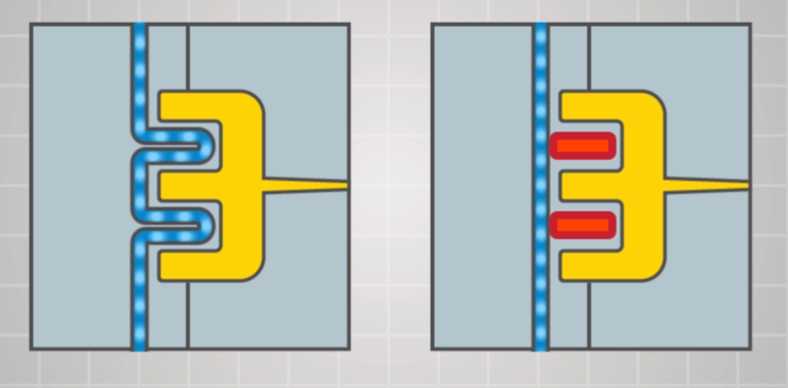Designing thermally optimized molds becomes more challenging as part designs become more complex. There are various cooling design strategies, from using drilled coolant circuits or baffles and bubblers, to selecting mold steels or thermal pins (sometimes called heat pipes or heat tubes.) Thermal pins are a cooling strategy to optimize thermal behavior inside a mold.
They are prefabricated components that can be integrated into a coolant design system. Thermal pins are super-thermal conductive devices that have the capacity to transfer heat at a high rate, both for cooling and heating applications.
This diagram shows the functionality of a thermal pin. An alternative to baffles and bubblers, a thermal pin is a sealed cylinder filled with a fluid. The fluid boils and vaporizes between the melt temperature and coolant temperature while drawing heat from the tool steel. Here it condenses as it releases heat to the coolant. This capillary behavior of the fluid causes the liquid to climb back up in the direction of the heat source. Heat pipes require high temperature gradients for this vaporization and condensation cycle to function. The heat transfer efficiency of a thermal pin is almost ten times greater than a copper or copper alloy steel insert.

Designing a mold cooling system is challenging and should be done in conjunction with optimizing part quality and reducing cycle time. Using thermal pins or heat pipes to achieve uniform temperature distribution is a good option either in place of or in conjunction with baffles and bubblers. Performing CAE mold thermal simulations is a key step for evaluating these designing challenges and determining an optimal solution.
The full Kruse Training Mold Design: Thermal Pins lesson is available with a subscription. Subscribe today to learn more!
More videos are available on the Kruse Training YouTube Channel.
